How to Detect Autism
Early Identification and Analysis: Key to Understanding Autism Spectrum Disorder

Introduction to Autism Detection
Detecting autism spectrum disorder (ASD) early is crucial for enabling timely interventions that dramatically improve long-term outcomes for individuals. This article explores how autism is identified through a combination of caregiver reports, clinical observations, and standardized diagnostic tools, emphasizing the process, techniques, and therapies relevant to behavioral analysis and treatment.
Understanding Autism Spectrum Disorder and Its Core Characteristics
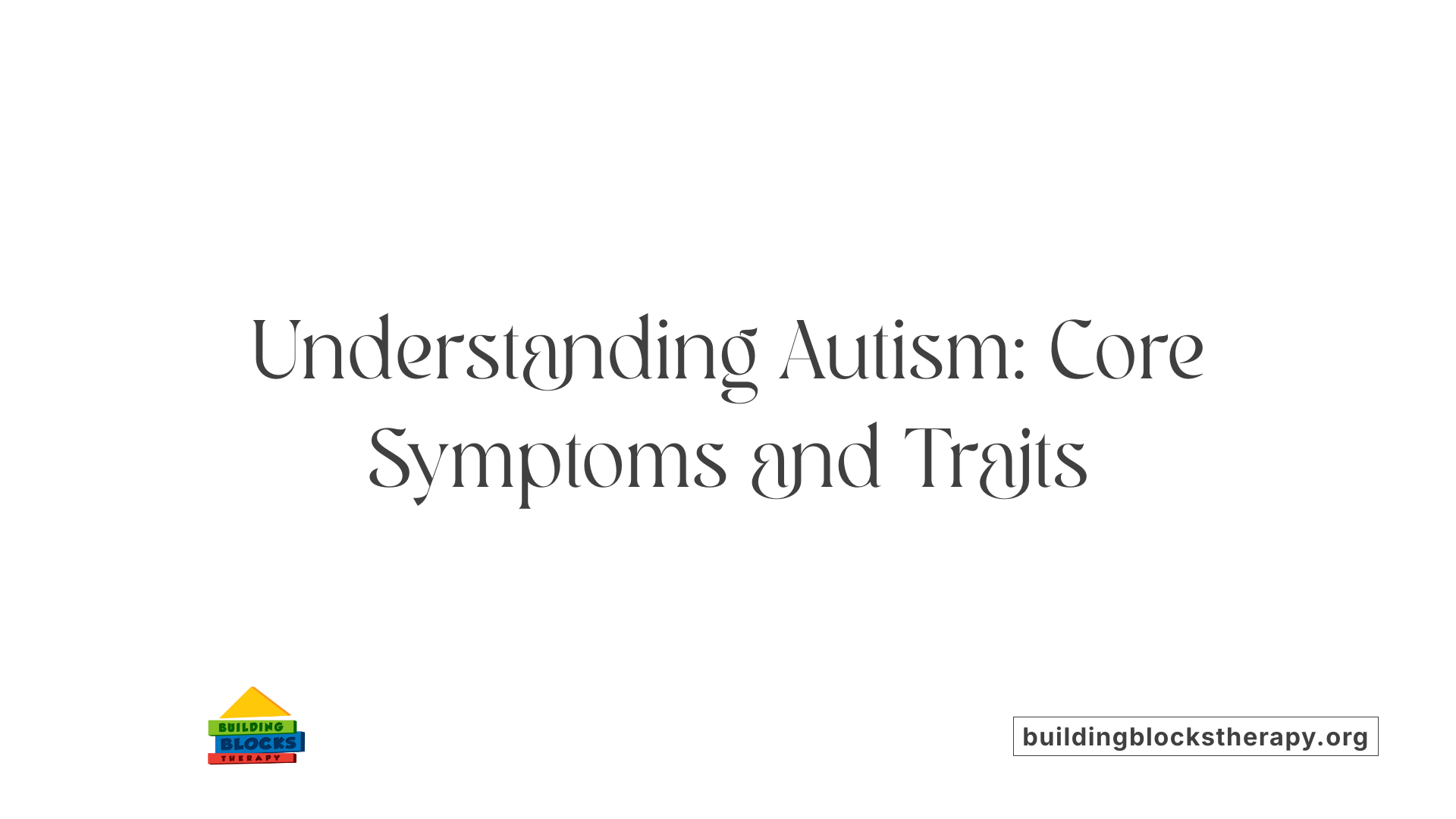
What Are the Core Features of Autism?
Autism spectrum disorder (ASD) is primarily marked by persistent challenges in social communication and interaction. Individuals with ASD often experience difficulties in engaging in social-emotional reciprocity, using or interpreting nonverbal communication such as eye contact or gestures, and in forming or maintaining relationships appropriate to their developmental level.
Differences in Communication and Social Interaction
Communication differences in ASD include challenges with verbal and nonverbal communication skills. This may manifest as delayed speech development, difficulties understanding tone or sarcasm, and problems with back-and-forth conversations. Social interaction is often affected through limited sharing of interests, reduced response to social cues, or a lack of typical social behaviors.
Restricted and Repetitive Behaviors and Interests
ASD also involves restricted and repetitive patterns of behavior, interests, or activities. These can range from repetitive movements like hand-flapping or rocking, insistence on sameness such as strict adherence to routines, and intense or focused interests on specific topics.
Sensory Differences Associated with Autism
Many individuals with ASD experience sensory processing differences, which impact how they perceive sights, sounds, textures, or smells. Sensory sensitivities or hyposensitivities can lead to unusual responses to everyday sensory stimuli, which may affect comfort and behavior.
These core characteristics form the basis for diagnosis and are essential for understanding the unique experiences of individuals on the autism spectrum.
The Importance of Early Recognition and Screening for Autism
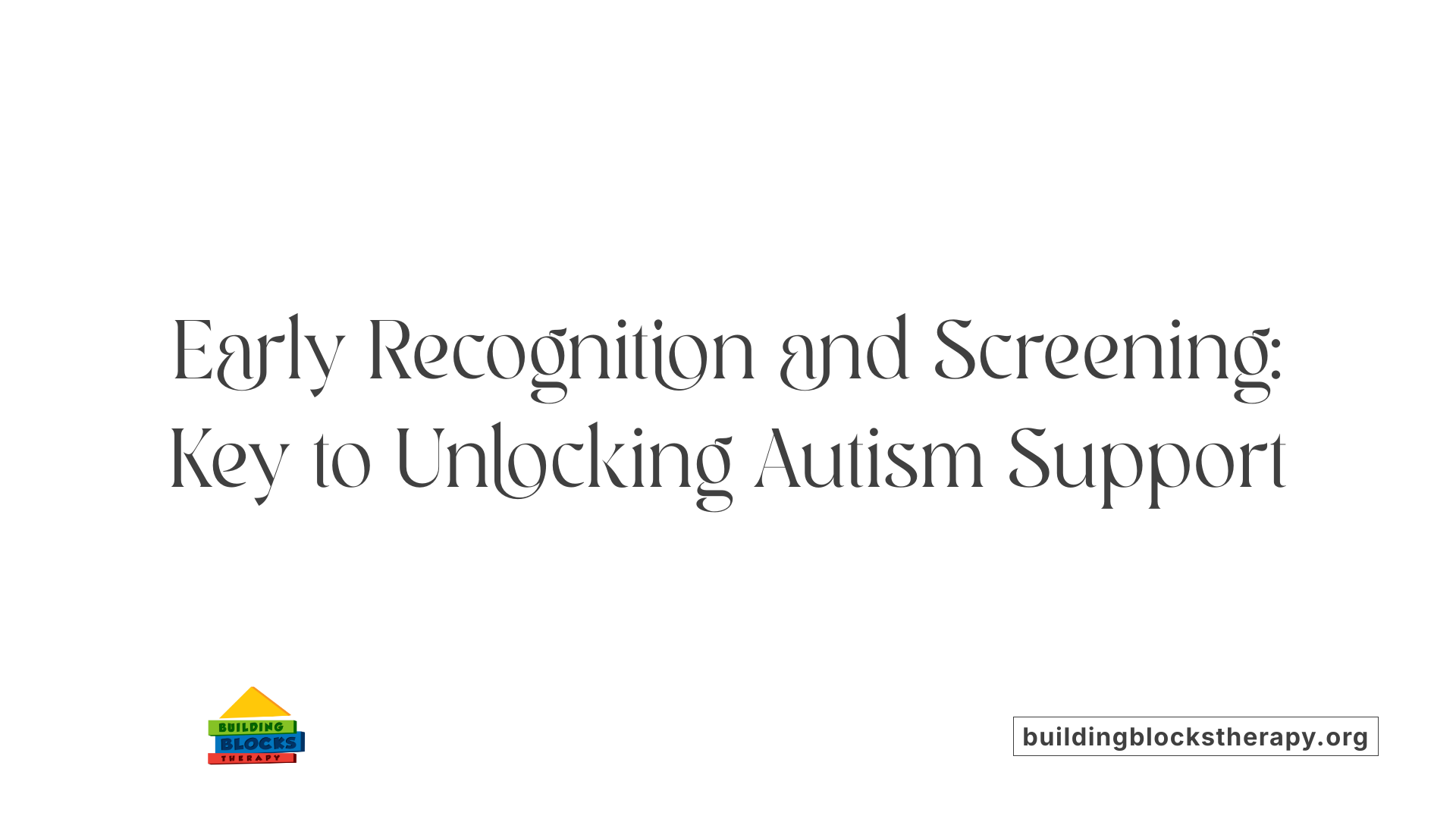
Early signs of autism in children
Early identification of autism spectrum disorder (ASD) relies on recognizing hallmark signs such as reduced eye contact, failure to respond to one's name, limited interactive and pretend play, aversion to physical contact, and insistence on routines. Observing repetitive movements and difficulties in social-emotional reciprocity or nonverbal communication also indicate potential ASD.
Significance of early diagnosis and intervention
Early diagnosis is crucial because it opens the door to specialized interventions tailored to improve social communication, language development, and behavioral management. During early childhood, neuroplasticity enables effective strengthening and modification of neural connections, enhancing outcomes in cognition, language, social-emotional functioning, and overall independence.
Recommended ages for autism screening
The Centers for Disease Control and Prevention (CDC) and American medical bodies recommend routine autism screening for all children at 9, 18, and either 24 or 30 months of age. These time points facilitate early detection before symptoms markedly impair daily functioning.
Role of pediatricians in early detection
Pediatricians primary administer autism screening during regular well-child visits. Tools such as the Modified Checklist for Autism in Toddlers-Revised with Follow-Up (M-CHAT-R/F) are widely used to identify children at risk. Prompt referral to specialists follows when screening indicates potential ASD.
Why is early detection of autism important?
Early detection allows for timely intervention that improves developmental trajectories in cognition, language, and social behaviors. The availability of screening at recommended ages leads to earlier identification, which correlates strongly with improved social and adaptive outcomes, enhancing quality of life and greater independence for the child.
| Aspect | Details | Notes |
|---|---|---|
| Early Signs | Eye contact avoidance, lack of name response, limited play, repetitive behaviors | Observable around infancy and toddlerhood |
| Screening Ages | 9, 18, 24 or 30 months | Recommended by CDC and American Academy of Pediatrics |
| Screening Tools | M-CHAT-R/F, SCQ, PEDS, CARS | Used by pediatricians for early risk identification |
| Importance of Early Intervention | Enhances neural development, communication, social skills, behavior | Leads to better long-term outcomes and independence |
| Role of Pediatricians | Routine surveillance, screening administration, and timely referral to specialists | Critical first step in the diagnostic pathway |
Recognizing Early Behavioral Signs of Autism in Children
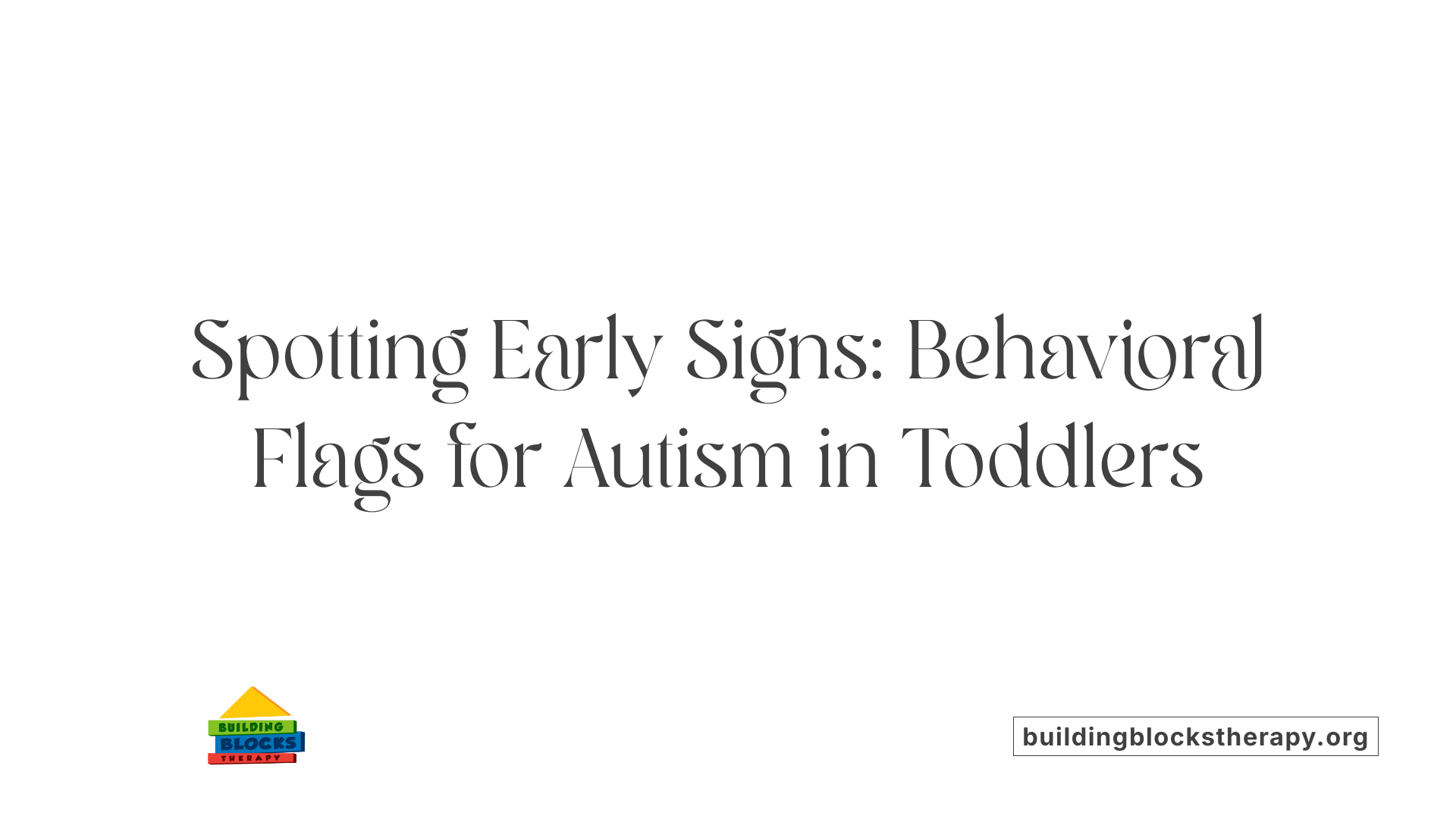
What behavioral signs may indicate autism in toddlers?
Early recognition of autism spectrum disorder (ASD) in toddlers is vital for timely intervention and improved outcomes. Common early behavioral signs include a child's failure to respond to their name, which may signal challenges in social responsiveness. Avoidance of eye contact is often observed, highlighting difficulties in social communication and emotional connection.
Social communication deficits manifest as limited social-emotional reciprocity, where the child shows reduced back-and-forth interactions with caregivers or peers. These deficits also encompass challenges in nonverbal behaviors such as gestures, facial expressions, and body language.
In terms of behaviors, toddlers with autism may exhibit repetitive motor movements—such as hand flapping, rocking, or spinning objects—and an insistence on sameness or strict adherence to routines. Such behaviors can limit their adaptability and cause distress when routines change.
Another hallmark sign is the lack of interactive and pretend play. Unlike typically developing children, those with autism may show little interest in engaging with others through imaginative play or shared activities, which are crucial for social and cognitive development.
Early identification of these behavioral signs warrants further evaluation by specialists to confirm diagnosis using standardized tools. Caregivers and professionals can then work towards initiating early interventions that support the child's social communication, flexibility, and play skills.
Standardized Diagnostic Criteria and Tools Used for Autism Assessment
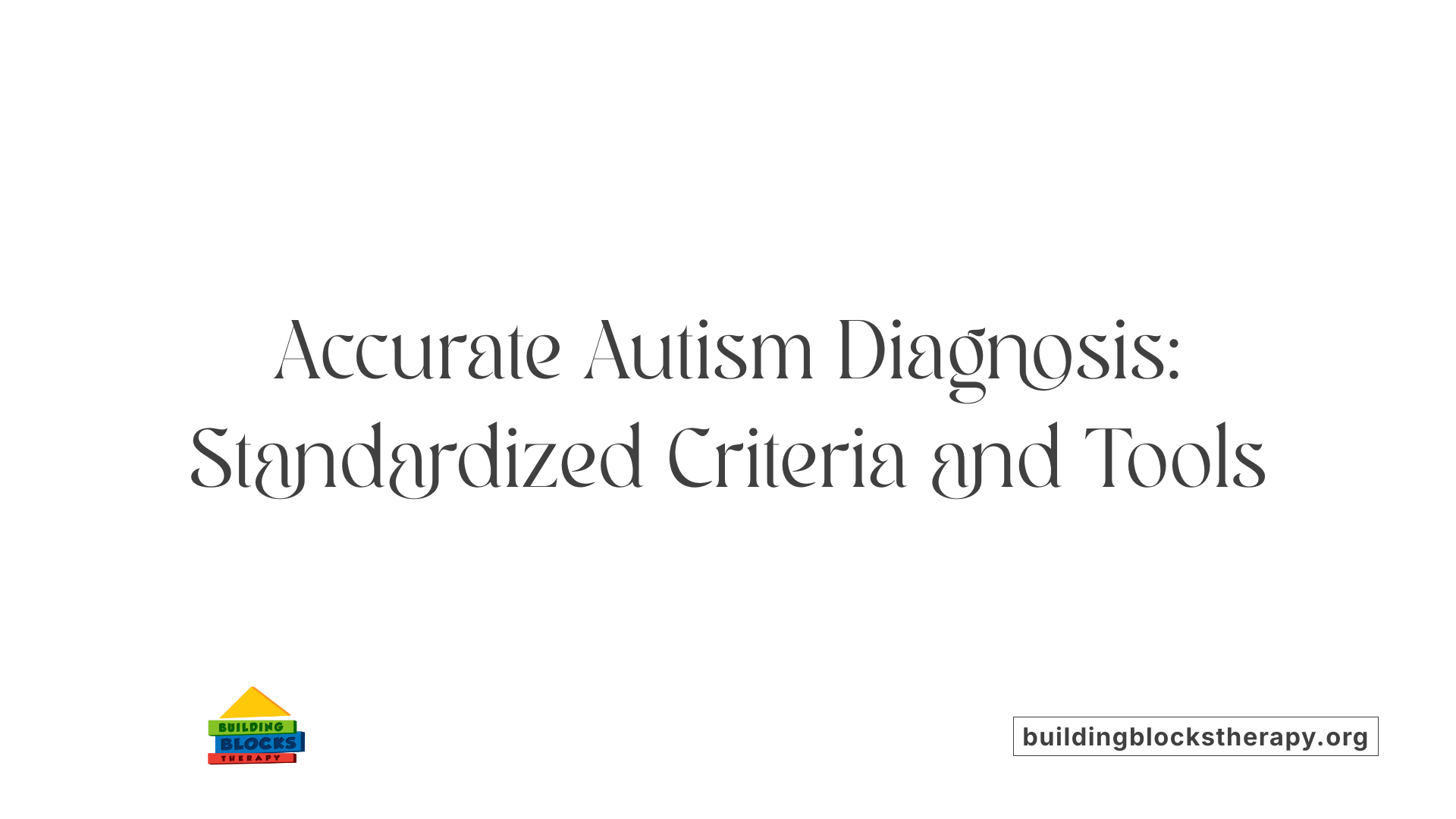
How is autism diagnosed using standardized criteria?
Autism spectrum disorder (ASD) diagnosis is built on standardized criteria mainly outlined in the Diagnostic and Statistical Manual of Mental Disorders, Fifth Edition (DSM-5). These criteria focus on persistent deficits in social communication and interaction, alongside restricted and repetitive patterns of behavior. To qualify for a diagnosis, symptoms must emerge during early developmental periods and result in significant impairment in social, occupational, or other important areas of functioning.
What are the classifications of support needed?
The DSM-5 specifies three levels of support needed to aid individuals with ASD, ranging from Level 1 (requiring support) to Level 3 (requiring very substantial support). These classifications help professionals tailor interventions based on the severity of symptoms and the individual's adaptive functioning.
What do the ICD-11 criteria include?
The International Classification of Diseases, 11th Revision (ICD-11) aligns with DSM-5 criteria but emphasizes difficulties in initiating and sustaining social communication, along with behaviors that are developmentally inappropriate. It also requires early onset and significant impairment for diagnosis.
How are multiple diagnostic tools used in assessment?
The assessment process incorporates various standardized tools to capture the broad spectrum of autism symptoms. Key instruments include:
| Tool | Purpose | Details |
|---|---|---|
| ADI-R | Structured parent interview | Evaluates social interaction, communication, and repetitive behaviors through caregiver input |
| ADOS | Observation-based assessment | Assesses communication, social interaction, and play through direct observation |
| CARS | Rating scale | Measures severity of autism symptoms based on behavior ratings |
These tools complement clinical judgment and developmental history for a comprehensive evaluation. Since no single tool suffices, combining standardized instruments ensures a robust diagnostic process.
In summary, diagnosing autism involves applying DSM-5 or ICD-11 criteria supported by multidisciplinary evaluations using validated diagnostic tools. This structured approach facilitates accurate identification of ASD and informs appropriate levels of support and intervention.
The Role of Caregivers and Professionals in Autism Diagnosis
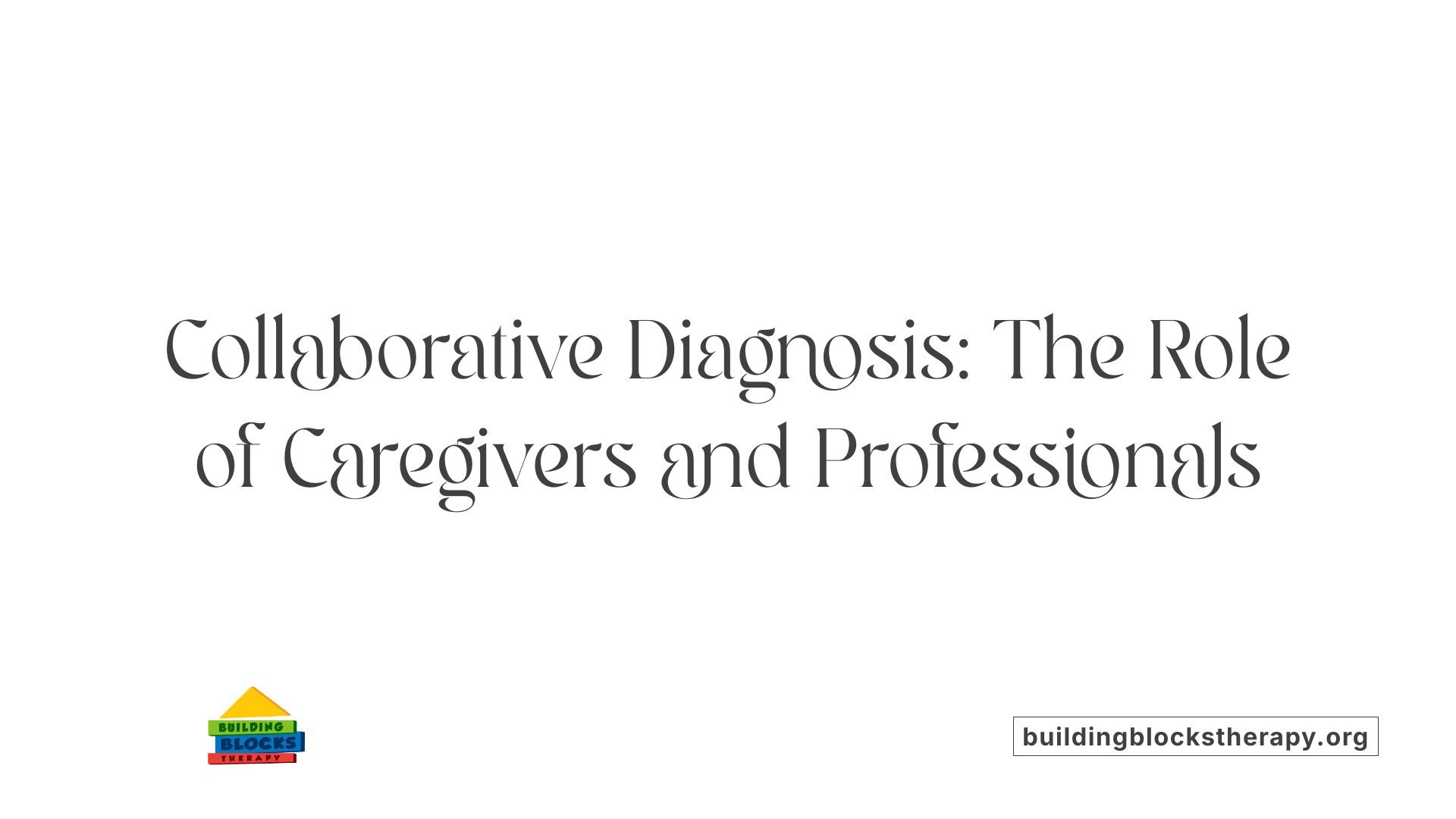
Who contributes to the autism diagnostic process?
The diagnosis of autism spectrum disorder (ASD) is a collaborative effort involving both caregivers and healthcare professionals. Parents or caregivers play a crucial role by providing detailed descriptions of the child's developmental history. Their observations about early signs, social communication challenges, and behaviors are foundational for initial evaluation.
Professional observations and clinical judgment
Qualified specialists such as psychologists, pediatric neurologists, and developmental pediatricians conduct professional observations using standardized diagnostic tools like the Autism Diagnostic Observation Schedule (ADOS) and Childhood Autism Rating Scale (CARS). These professionals apply clinical judgment to interpret behaviors and assess social communication deficits and restricted patterns of behavior.
Necessity of multidisciplinary evaluations
Given the complex nature of autism, a multidisciplinary team often undertakes comprehensive evaluations. This team approach can integrate inputs from medical, psychological, and educational professionals, ensuring thorough assessment of symptoms, co-occurring conditions, and developmental needs. Multidisciplinary evaluations enhance diagnostic accuracy and help tailor individualized interventions.
Importance of ongoing assessment and re-evaluation
Autism diagnosis is not a one-time event but an ongoing process. Periodic re-evaluations are necessary to monitor symptom changes, developmental progress, and evolving support needs. Regular assessments help inform adjustments in therapeutic and educational plans, particularly as children grow and new challenges or strengths emerge.
Together, caregivers' insights and professionals' expertise form the cornerstone of accurate ASD diagnosis and effective intervention planning.
Screening Instruments for Early Autism Detection
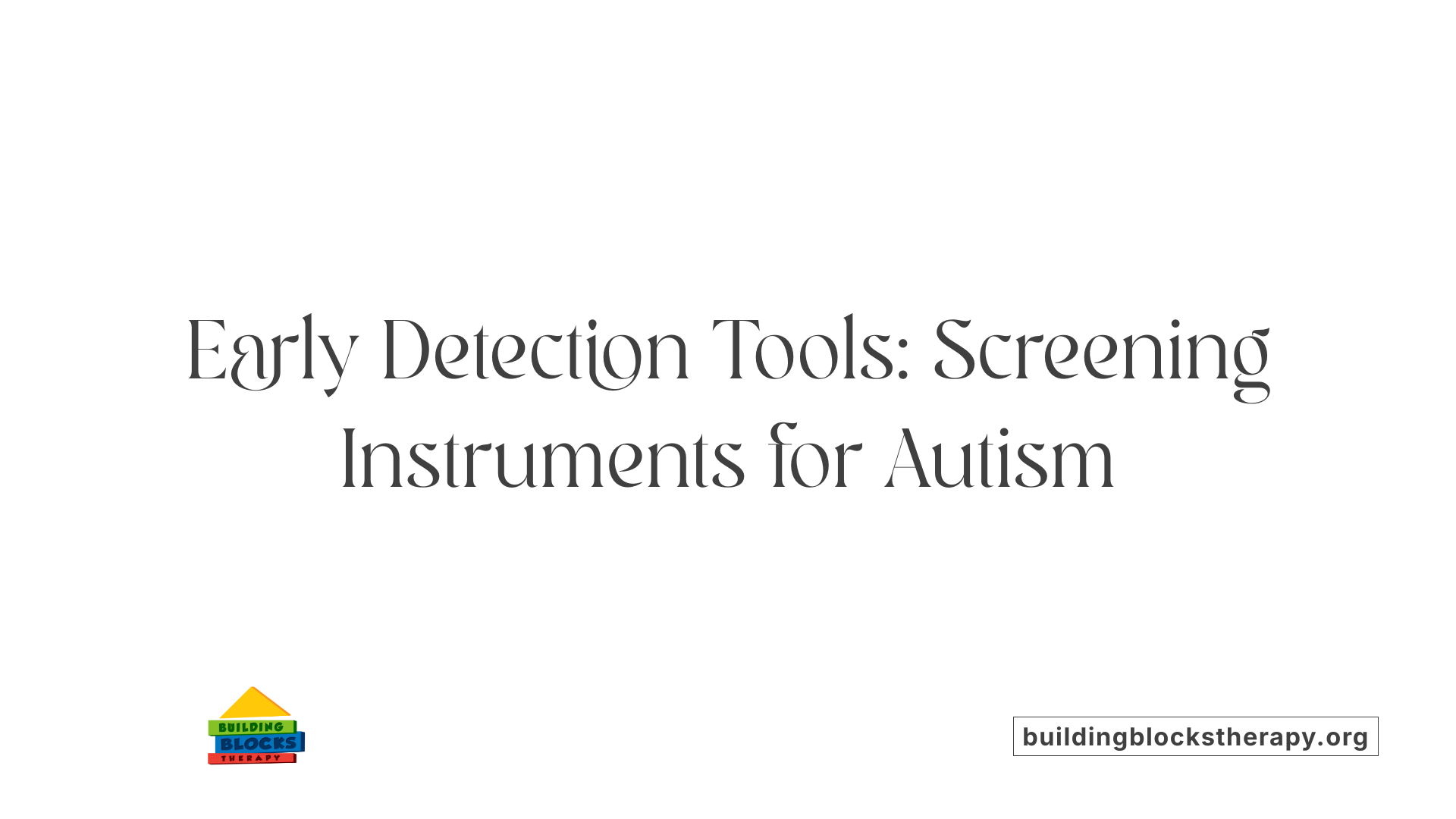
What screening tools are used for early autism detection?
Early detection of autism spectrum disorder (ASD) significantly improves outcomes by enabling timely interventions. Several screening tools are vital in identifying young children who may need further evaluation.
The Modified Checklist for Autism in Toddlers, Revised with Follow-Up (M-CHAT-R/F) is widely recommended for toddlers. It boasts a sensitivity of 78% and specificity of 98%, making it highly effective for screening in general populations. This questionnaire is typically administered by pediatricians during routine checkups at 18 and 24 months, per American Academy of Pediatrics guidance.
The Social Communication Questionnaire (SCQ) screens for communication delays and social difficulties, helping flag potential ASD symptoms.
The Parents' Evaluation of Developmental Status (PEDS) collects caregiver concerns about a child's development and is useful for broad developmental screening.
The Childhood Autism Rating Scale (CARS) is utilized both as a screening and diagnostic adjunct tool, evaluating autism severity based on observed behaviors.
Screening across early childhood stages
Screening is recommended multiple times in early childhood to capture symptoms as they emerge. The CDC advises screening at 9, 18, and 24–30 months to ensure early recognition. Screening tools are complemented by direct professional observation and developmental history assessments.
Together, these instruments provide a multi-source approach, facilitating the identification of children who benefit from comprehensive diagnostic evaluations by specialists. Early and repeated screening supports improved social communication, language development, and behavioral interventions.
| Screening Tool | Age Range | Purpose/Description |
|---|---|---|
| M-CHAT-R/F | 16-30 months | Autism-specific screener with high sensitivity and specificity |
| Social Communication Questionnaire (SCQ) | Over 4 years | Assesses social communication and interaction concerns |
| Parents' Evaluation of Developmental Status (PEDS) | Birth to 8 years | Broad developmental screener based on parental concerns |
| Childhood Autism Rating Scale (CARS) | 2 years and up | Observational tool rating autism severity |
Advanced Approaches and Challenges in Autism Diagnosis
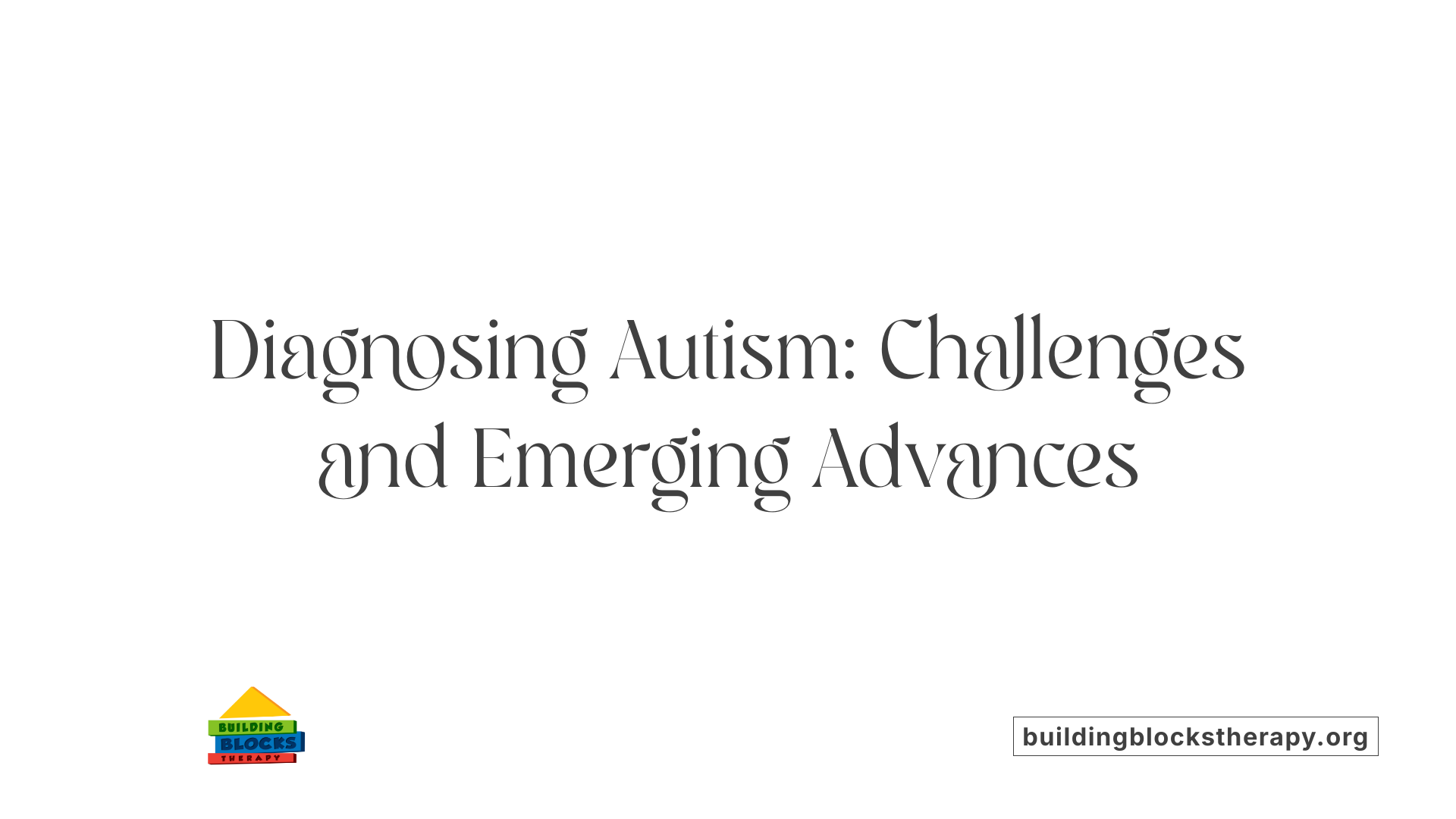
What challenges exist in diagnosing autism?
Diagnosing autism spectrum disorder (ASD) is complex due to the wide heterogeneity of symptoms exhibited by individuals. ASD presents with varying degrees of social communication difficulties, repetitive behaviors, and sensory differences, which may differ greatly from person to person. This variability complicates the process of pinpointing a diagnosis.
Comorbid conditions also add to diagnostic challenges. Many individuals with autism experience additional health issues such as gastrointestinal problems, sensory processing difficulties, low muscle tone, seizures, and sleep disturbances. These overlapping conditions can mask or mimic ASD symptoms, making clear differentiation difficult during assessment.
Cultural and social factors influence how symptoms are perceived and reported. Diverse cultural norms around social interaction and communication can affect parents' and caregivers' descriptions, while clinicians’ biases or unfamiliarity with cultural contexts may impact evaluation. Such variability requires careful interpretation of behaviors within cultural frameworks to avoid misdiagnosis.
To address these challenges, emerging research is focusing on advanced technologies and methods. Neuroimaging techniques aim to identify brain structure and connectivity patterns associated with ASD. Genetic studies explore epigenetic markers and mutations to uncover biological underpinnings. Artificial intelligence and machine learning are being developed to analyze complex datasets from clinical observations, genetics, and imaging to improve diagnostic precision.
Integrating these innovative approaches alongside standardized behavioral assessments holds promise for overcoming current limitations. However, clinical judgment and multidisciplinary evaluations remain fundamental in effectively diagnosing ASD amid its diverse presentations.
| Challenge Area | Description | Emerging Solutions |
|---|---|---|
| Symptom Heterogeneity | Wide range in ASD symptoms and severity complicates diagnosis. | Multimodal assessments combining behavior and biology. |
| Comorbid Conditions | Co-occurring issues like GI problems and sensory dysfunction mask ASD signs. | Comprehensive health screenings and integrated care plans. |
| Cultural & Social Variability | Differences in social norms affect symptom reporting and interpretation. | Culturally sensitive evaluation tools and training. |
| Diagnostic Subjectivity | Behavioral assessments depend on clinician judgment and parental reports. | AI-driven data analysis to reduce subjectivity. |
| Biological Markers | Lack of definitive biomarkers for ASD diagnosis. | Neuroimaging and genetic testing advancing diagnostic frameworks. |
Comprehensive Diagnostic Methods Beyond Behavioral Observation
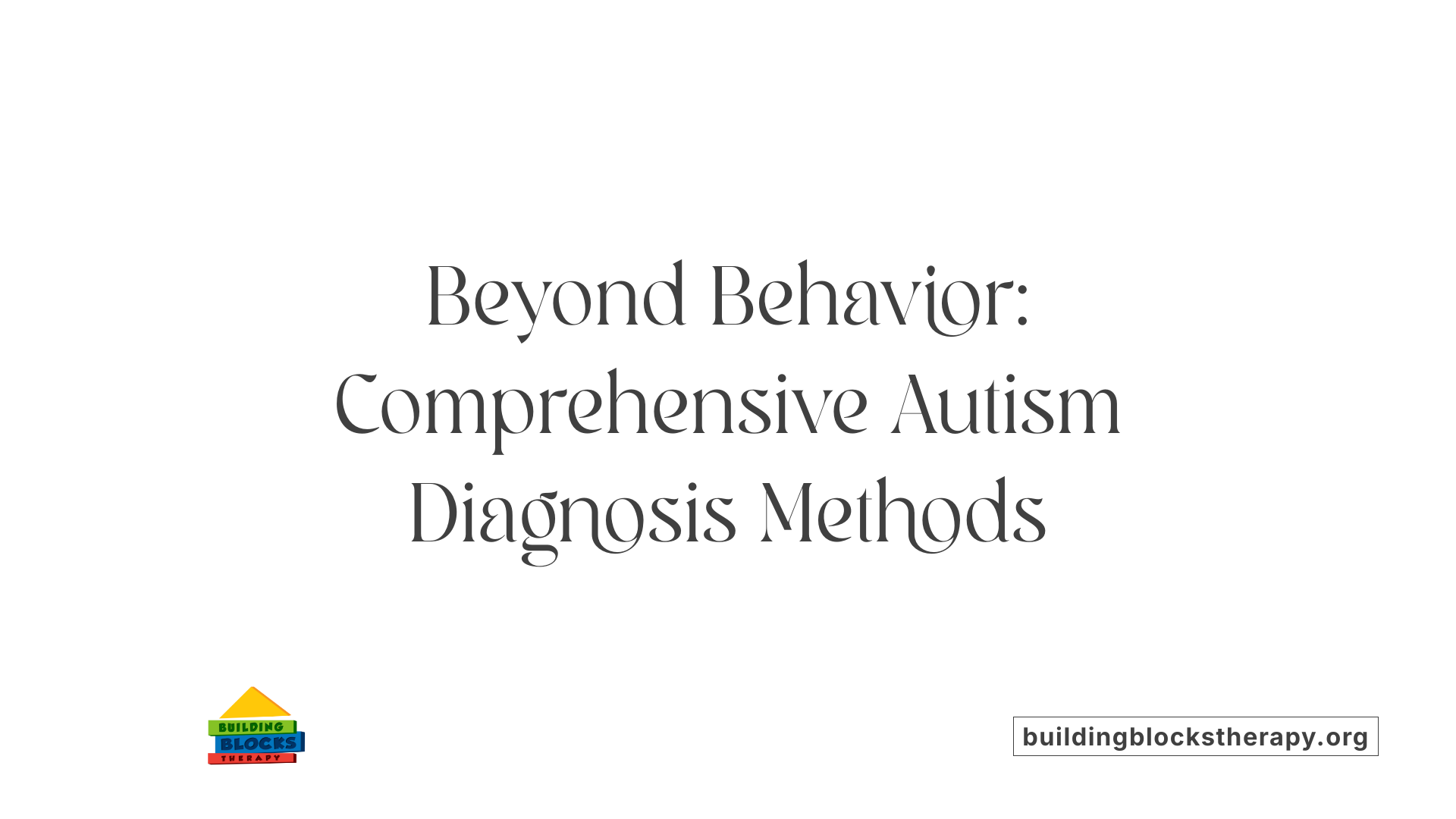
What comprehensive methods support an autism diagnosis?
While behavioral observations form the foundation of autism spectrum disorder (ASD) diagnosis, comprehensive evaluation involves multiple detailed assessments to capture the full developmental profile.
Clinicians use standardized instruments such as the Autism Diagnostic Observation Schedule™ (ADOS™-2) for direct observation of social communication, interaction, and repetitive behaviors. These tools provide structured, reliable settings to identify core ASD symptoms.
In addition to behavioral assessments, speech and language evaluations analyze communication skills, identifying expressive and receptive language difficulties common in ASD.
Cognitive and neuropsychological testing further supports diagnosis by evaluating memory, attention, executive functioning, and other mental processes. This helps differentiate ASD from other developmental conditions and highlights individual strengths and challenges.
To rule out or identify comorbid conditions, hearing and vision screenings are routinely performed, ensuring sensory deficits are addressed.
Moreover, genetic testing plays an important role. Techniques like chromosome analysis, microarray testing, and screening for specific gene mutations (e.g., fragile X syndrome) can detect genetic abnormalities associated with autism. These results not only support diagnosis but also inform personalized treatment plans and medical management.
Together, these comprehensive methods ensure a thorough, multidisciplinary approach, capturing the complexity of ASD beyond behavior alone. This thorough evaluation is critical for accurate diagnosis and defines the best individualized interventions.
The Autism Behavior Analysis Therapy: Principles and Practices
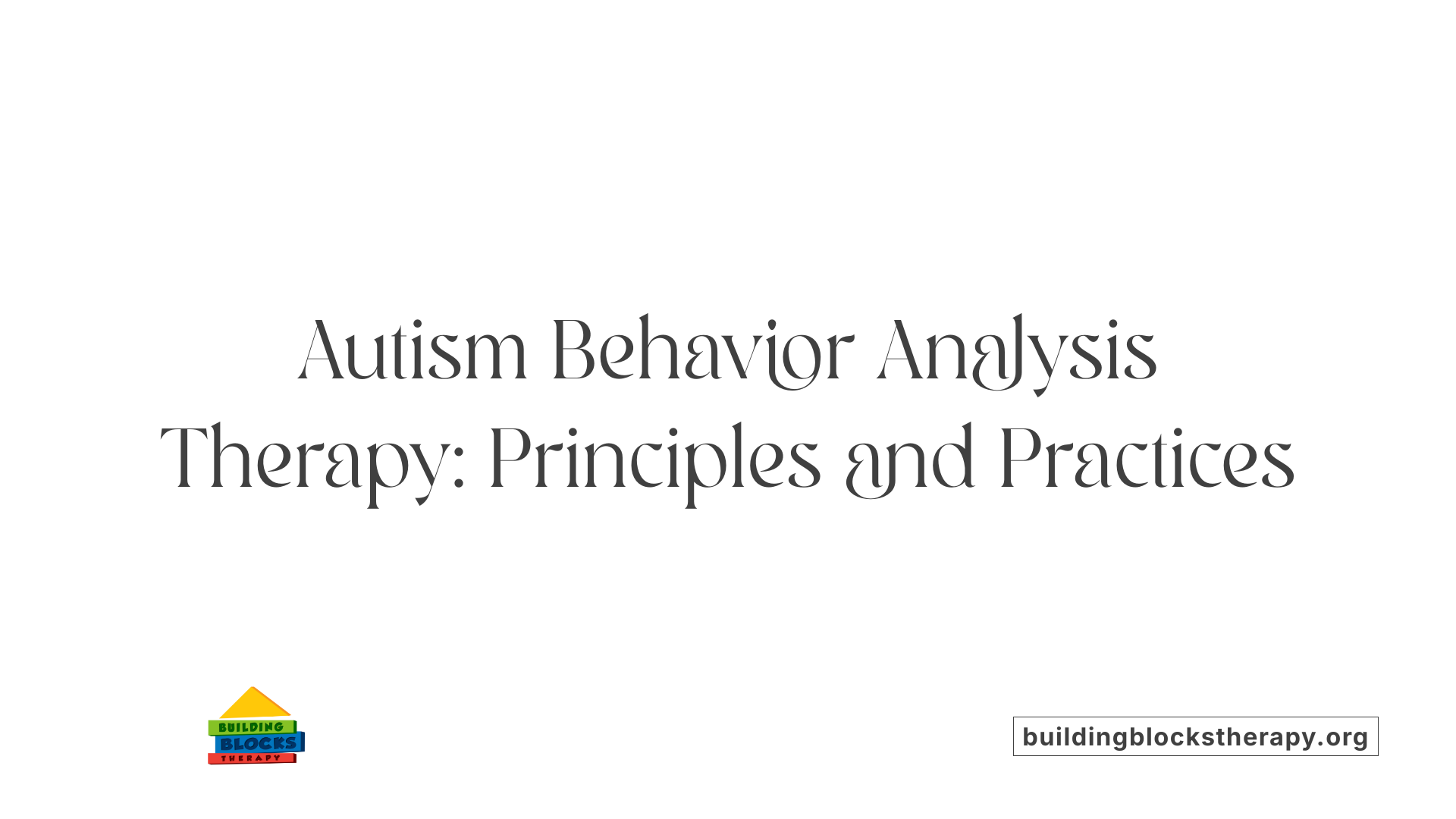
What is autism behavior analysis therapy and how does it work?
Applied Behavior Analysis (ABA) is a therapy grounded in the science of learning and behavior. It focuses on understanding how behavior works and the ways it is influenced by the environment. ABA uses the ABC model, which examines Antecedents (what happens before a behavior), Behaviors themselves, and Consequences (what happens after the behavior) to develop effective strategies for behavior change.
ABA therapy involves increasing helpful behaviors—such as communication, social interaction, and academic skills—while decreasing harmful or disruptive behaviors that impact learning and daily life. This is accomplished by systematically applying reinforcement, which rewards positive behaviors to encourage their repetition. Rewards are carefully tailored to the individual and can include praise, toys, or access to preferred activities.
Prompting is another important tool in ABA, used to guide individuals towards the desired behavior when needed, gradually fading as the skill is acquired. The therapy relies heavily on positive reinforcement to promote natural and planned learning opportunities, emphasizing social interactions without reinforcing negative behaviors.
ABA programs are highly individualized. A qualified Board Certified Behavior Analyst (BCBA) oversees the design and implementation of the therapy. Treatment plans are based on detailed assessments of each person’s unique skills, needs, and preferences. Goals may include communication, social skills, self-care, play, motor skills, and academic achievements. Progress is carefully monitored through data collection to ensure effectiveness and make ongoing adjustments.
In sum, ABA is a structured, evidence-based intervention that harnesses behavioral science principles to help individuals with autism develop essential skills and improve independence.
Qualified Providers of Autism Behavior Analysis Therapy
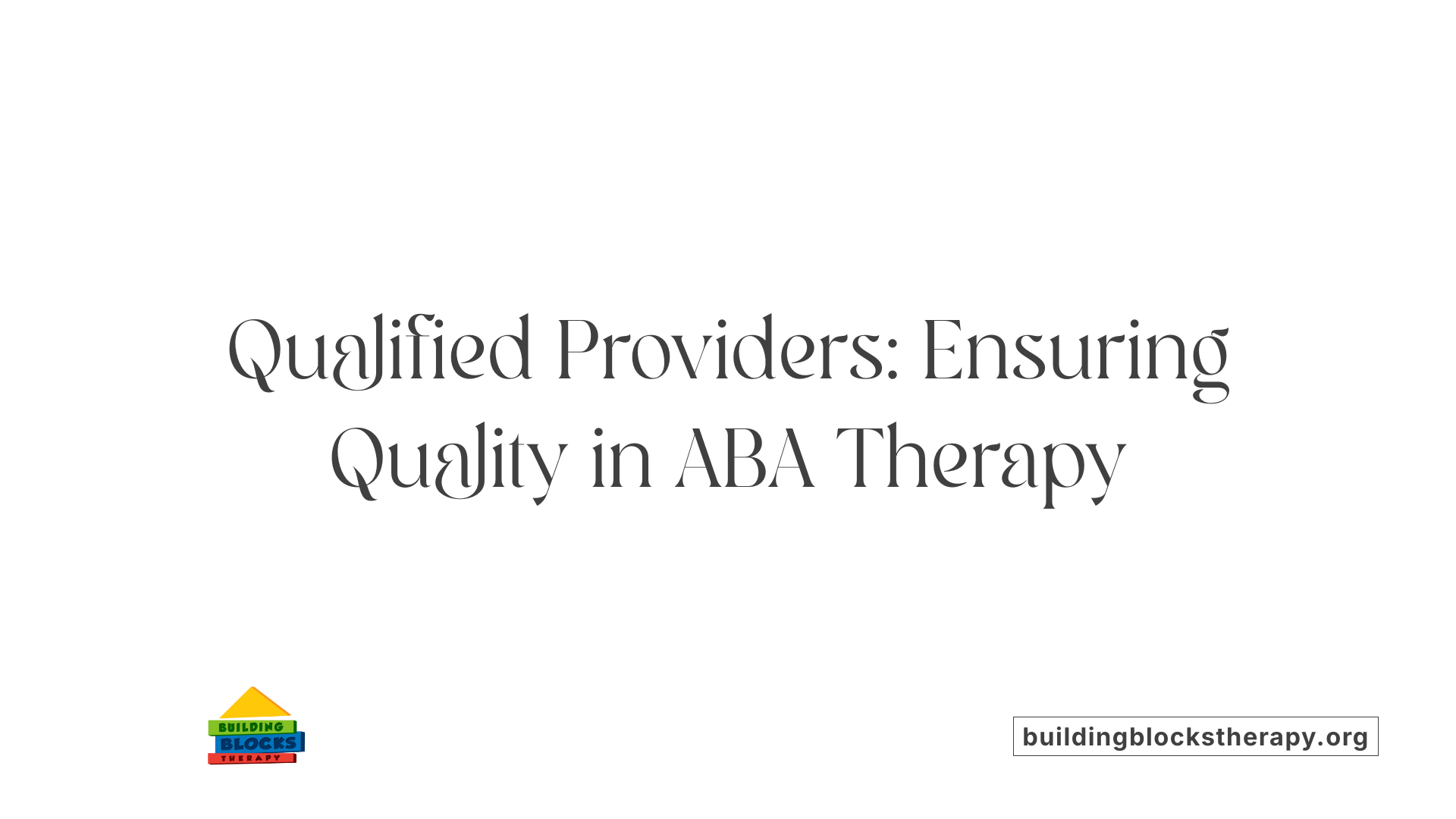
Who typically provides autism behavior analysis therapy?
Autism behavior analysis therapy, commonly known as Applied Behavior Analysis (ABA), is primarily delivered by Board Certified Behavior Analysts (BCBAs). These professionals are extensively trained and certified to design and oversee individualized treatment plans tailored to each person's unique needs.
Trained therapists, who work under the supervision of BCBAs, are responsible for implementing the day-to-day therapy interventions. These therapists receive specialized training to apply ABA techniques effectively in diverse environments, ensuring continuity and consistency of care.
Collaboration with families and caregivers is a cornerstone of ABA therapy. BCBAs and therapists work closely with family members to involve them in the therapy process, providing guidance and education to support generalization of skills into everyday life. This partnership enhances therapy outcomes and fosters a supportive home environment.
Access to ABA therapy depends on having qualified providers who meet certification standards. The BCBA credential requires rigorous education, supervised experience, and passing a certification exam. Ensuring providers have necessary qualifications and appropriate training is essential for the successful delivery of evidence-based ABA services.
Overall, the teamwork between BCBAs, trained therapists, and families forms the foundation of effective autism behavior analysis therapy, supporting skill development and improved quality of life for individuals with ASD.
Common Techniques Employed in Autism Behavior Analysis Therapy
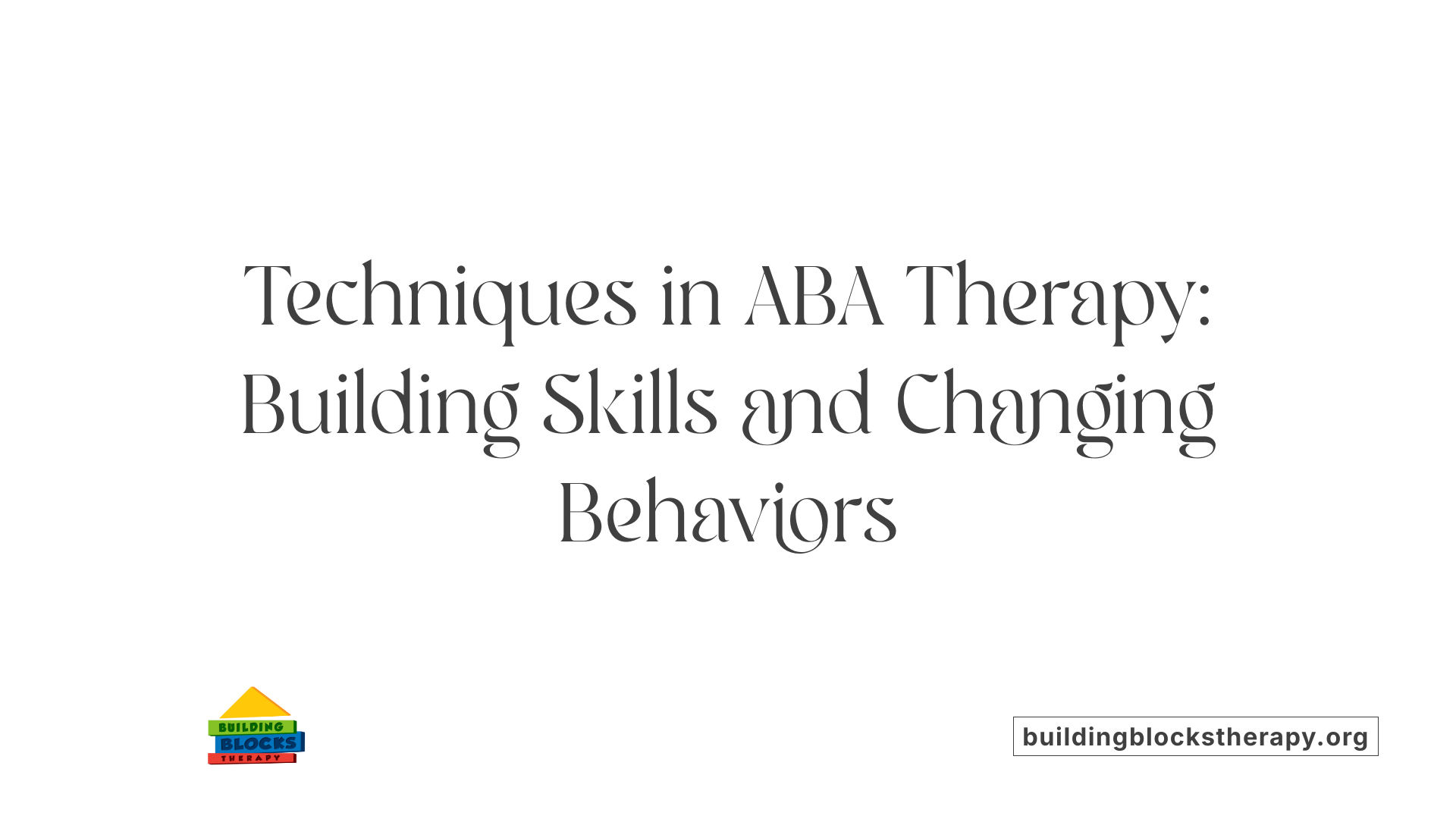
What techniques are commonly used in autism behavior analysis therapy?
Autism behavior analysis therapy, often referred to as Applied Behavior Analysis (ABA), utilizes several effective techniques to promote skill development and reduce challenging behaviors.
Positive reinforcement and rewards are fundamental. This technique involves encouraging desired behaviors by providing rewards tailored to the individual, such as praise, toys, or access to enjoyable activities. The aim is to increase the likelihood that the behavior will be repeated.
Discrete Trial Training (DTT) is a structured method where skills are broken down into small steps and taught systematically. It involves clear instructions, prompting, the behavior itself, and immediate reinforcement.
Natural Environment Teaching (NET) focuses on teaching skills within everyday settings and activities. This approach helps children generalize learned behaviors and use skills naturally in different contexts.
Prompting and fading guide the child to perform a behavior with the help of cues or assistance, which is gradually reduced as the child becomes more independent. This technique avoids prompt dependency.
Behavior chaining involves teaching complex tasks by linking smaller, simpler actions in a sequence. For example, hand washing can be taught as a chain of individual steps.
Extinction targets reducing unwanted behaviors by withholding reinforcement that previously maintained those behaviors, leading to their decrease over time.
Modeling demonstrates desired behaviors for the child to imitate, providing a clear example to follow.
Together, these techniques form a comprehensive and individualized approach. A qualified behavior analyst (BCBA) typically oversees therapy, ensuring programs are tailored to the child's unique needs and continuously monitored for progress.
Benefits of Autism Behavior Analysis Therapy
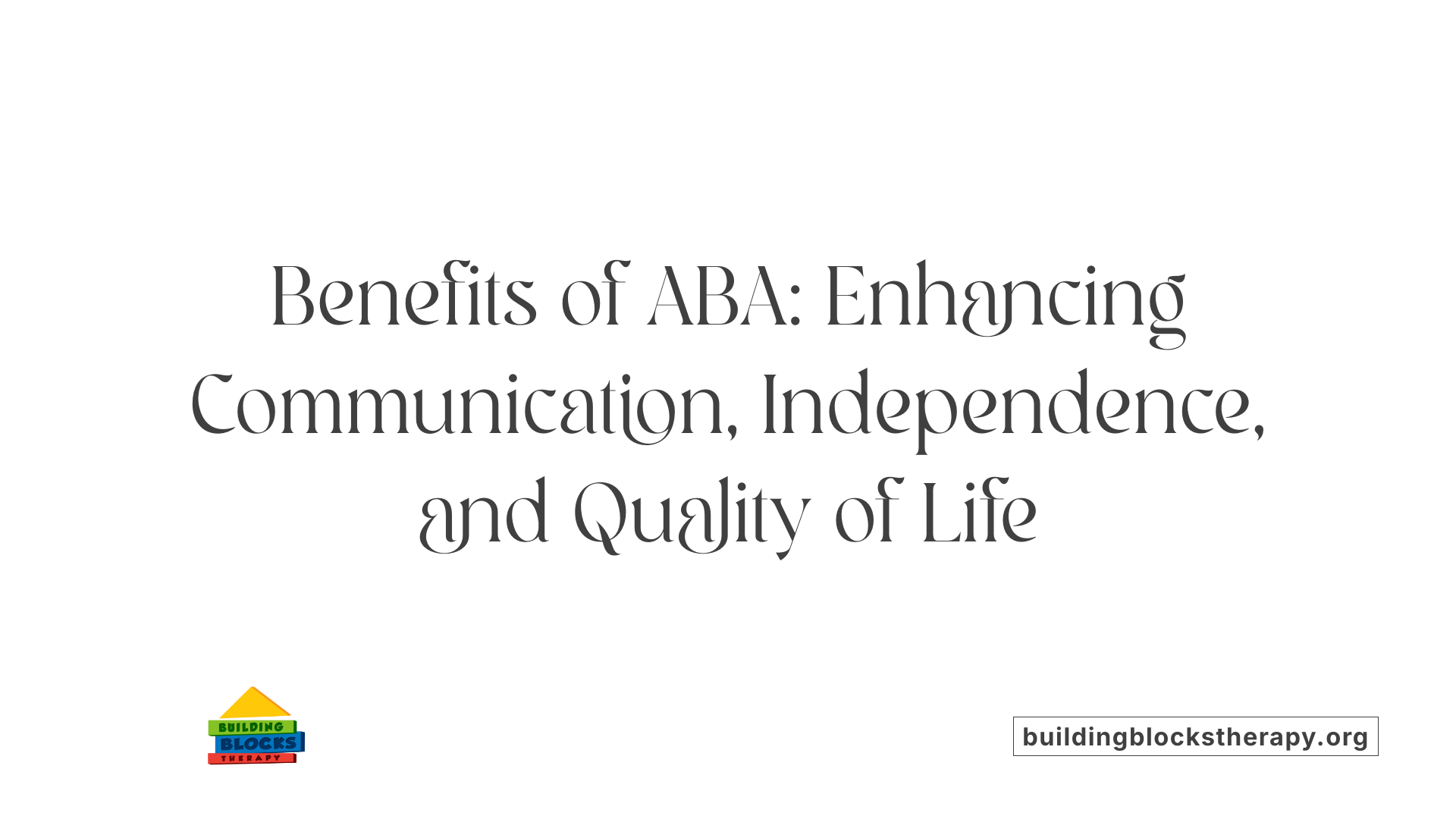
Improvements in communication and social interaction
Autism Behavior Analysis Therapy, commonly known as Applied Behavior Analysis (ABA), significantly enhances language and communication skills in individuals with autism. It focuses on increasing social skills by teaching effective interaction strategies, attention, and memory. ABA's structured approach targets behaviors that promote positive social engagement, which helps individuals build relationships and improve social reciprocity.
Enhancement of independence and daily skills
ABA therapy is tailored to each person's unique needs, aiming to foster independence in daily living skills. It addresses self-care, play, motor, and academic skills by using individualized programs that promote helpful behaviors and reduce those interfering with learning. Techniques used include positive reinforcement, which encourages repetition of desirable behaviors by rewards such as praise or preferred activities.
Evidence supporting ABA effectiveness
Extensive research, including endorsements by the US Surgeon General and the American Psychological Association, supports ABA as an evidence-based treatment for autism. Studies show that ABA can lead to improved cognitive, language, and social-emotional functioning, particularly when started in early childhood during critical periods of neuroplasticity.
Quality of life advancements for individuals with autism
By increasing communication abilities and independence, ABA therapy contributes significantly to better social acceptance and autonomy. These improvements lead to higher quality of life and better long-term developmental trajectories. Early intervention with ABA helps children with autism to thrive in their environments, ultimately supporting their success and well-being throughout life.
Integrating Diagnosis and Intervention for Optimal Outcomes

How do early diagnosis and therapies combine to support individuals with autism?
Early diagnosis of autism spectrum disorder (ASD) is fundamental for initiating tailored interventions that significantly enhance developmental outcomes. Once identified through screening tools and diagnostic criteria such as those in DSM-5, children gain access to therapies specifically designed to address their unique social, communication, and behavioral needs.
Applied Behavior Analysis (ABA) is a widely recognized therapy that uses the science of behavior to increase helpful skills like language, social interaction, and academic abilities, while decreasing behaviors that impede learning. ABA programs are individualized, often overseen by certified behavior analysts who tailor interventions based on detailed assessments. The therapy employs positive reinforcement and the ABC model (antecedent, behavior, consequence) to shape desirable behaviors.
Another crucial component of effective ASD intervention is family education and support. Family therapies empower caregivers by teaching them strategies to manage behaviors, support social interactions, and foster daily living skills, which enhances consistency and effectiveness of interventions across environments.
Monitoring treatment outcomes over time is essential to ensure continued progress. Tools like the Autism Treatment Evaluation Checklist (ATEC) help track symptom changes and guide modifications in therapeutic approaches. Multidisciplinary teams—including psychologists, speech therapists, occupational therapists, and pediatricians—collaborate to provide comprehensive care, addressing not only core ASD characteristics but also comorbid conditions such as sensory processing issues or sleep disturbances.
This integrated approach, starting from early diagnosis to ongoing tailored therapies combined with family involvement and multidisciplinary support, creates an environment that optimizes developmental trajectories and supports individuals with autism toward greater independence and quality of life.
Conclusion: The Road to Effective Autism Detection and Support
Detecting autism spectrum disorder early and accurately requires a multifaceted approach involving caregiver insights, standardized diagnostic criteria, professional evaluations, and validated screening tools. Early identification leads directly to evidence-based interventions such as Applied Behavior Analysis, which have been conclusively shown to improve communication, social skills, and independence. Qualified professionals, including Board Certified Behavior Analysts, play a vital role in delivering individualized therapies that address each person's unique needs. As research advances, innovative diagnostic technologies and holistic care models promise to enhance detection and treatment further, underscoring the essential nature of early, comprehensive autism detection in improving lives.
References
- Clinical Testing and Diagnosis for Autism Spectrum Disorder
- Early Diagnosis of Autism Spectrum Disorder: A Review ...
- Screening & Diagnosis
- Criteria and tools used in an autism assessment
- Autism Screening & Assessments
- Screening and diagnostic tools for autism spectrum disorder
- Autism spectrum disorder - Diagnosis and treatment
- Applied Behavior Analysis (ABA)
- Diagnosing Autism Spectrum Disorder in Children






